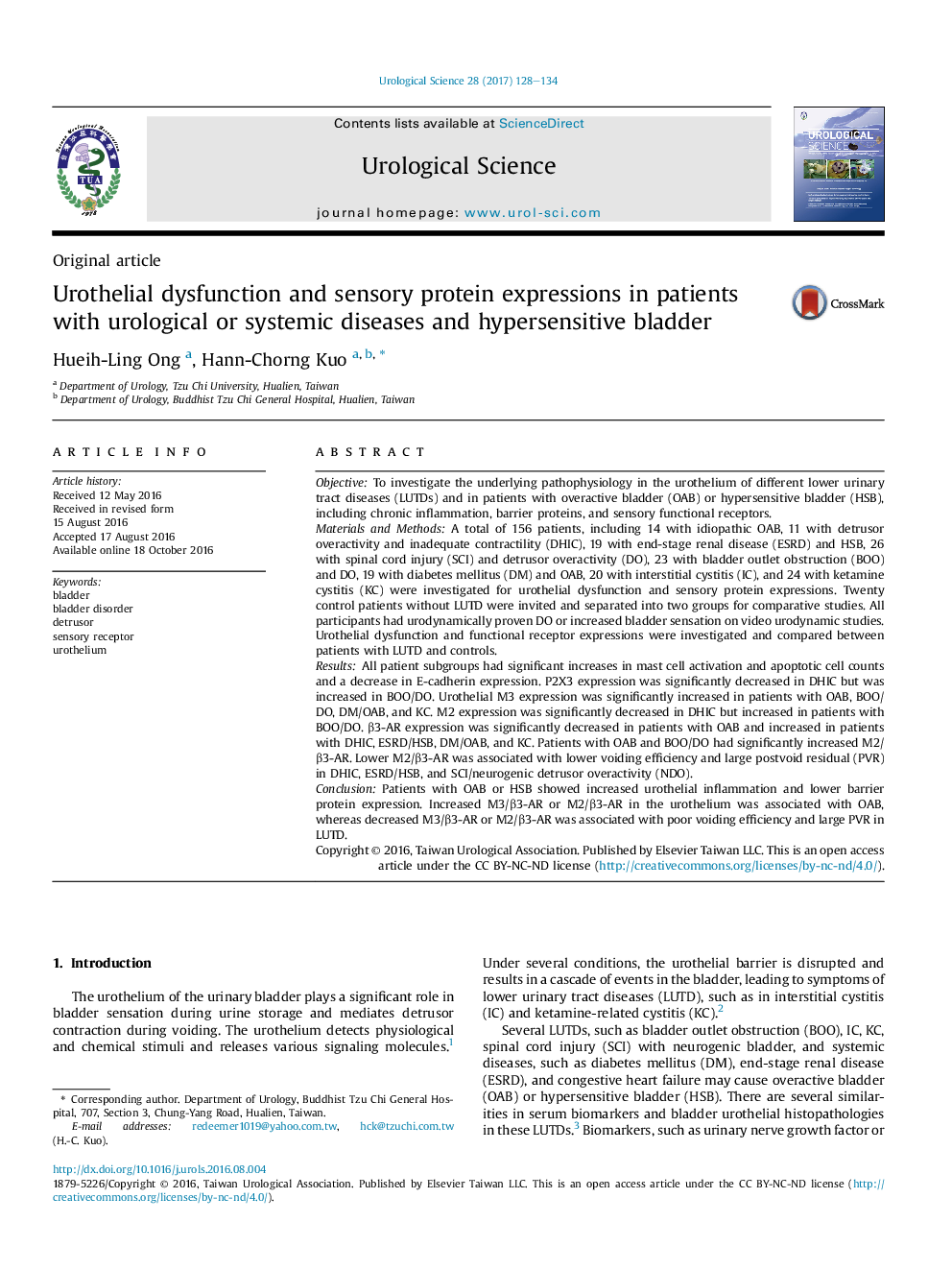| کد مقاله | کد نشریه | سال انتشار | مقاله انگلیسی | نسخه تمام متن |
|---|---|---|---|---|
| 5730647 | 1611153 | 2017 | 7 صفحه PDF | دانلود رایگان |
ObjectiveTo investigate the underlying pathophysiology in the urothelium of different lower urinary tract diseases (LUTDs) and in patients with overactive bladder (OAB) or hypersensitive bladder (HSB), including chronic inflammation, barrier proteins, and sensory functional receptors.Materials and MethodsA total of 156 patients, including 14 with idiopathic OAB, 11 with detrusor overactivity and inadequate contractility (DHIC), 19 with end-stage renal disease (ESRD) and HSB, 26 with spinal cord injury (SCI) and detrusor overactivity (DO), 23 with bladder outlet obstruction (BOO) and DO, 19 with diabetes mellitus (DM) and OAB, 20 with interstitial cystitis (IC), and 24 with ketamine cystitis (KC) were investigated for urothelial dysfunction and sensory protein expressions. Twenty control patients without LUTD were invited and separated into two groups for comparative studies. All participants had urodynamically proven DO or increased bladder sensation on video urodynamic studies. Urothelial dysfunction and functional receptor expressions were investigated and compared between patients with LUTD and controls.ResultsAll patient subgroups had significant increases in mast cell activation and apoptotic cell counts and a decrease in E-cadherin expression. P2X3 expression was significantly decreased in DHIC but was increased in BOO/DO. Urothelial M3 expression was significantly increased in patients with OAB, BOO/DO, DM/OAB, and KC. M2 expression was significantly decreased in DHIC but increased in patients with BOO/DO. β3-AR expression was significantly decreased in patients with OAB and increased in patients with DHIC, ESRD/HSB, DM/OAB, and KC. Patients with OAB and BOO/DO had significantly increased M2/β3-AR. Lower M2/β3-AR was associated with lower voiding efficiency and large postvoid residual (PVR) in DHIC, ESRD/HSB, and SCI/neurogenic detrusor overactivity (NDO).ConclusionPatients with OAB or HSB showed increased urothelial inflammation and lower barrier protein expression. Increased M3/β3-AR or M2/β3-AR in the urothelium was associated with OAB, whereas decreased M3/β3-AR or M2/β3-AR was associated with poor voiding efficiency and large PVR in LUTD.
Journal: Urological Science - Volume 28, Issue 3, September 2017, Pages 128-134
